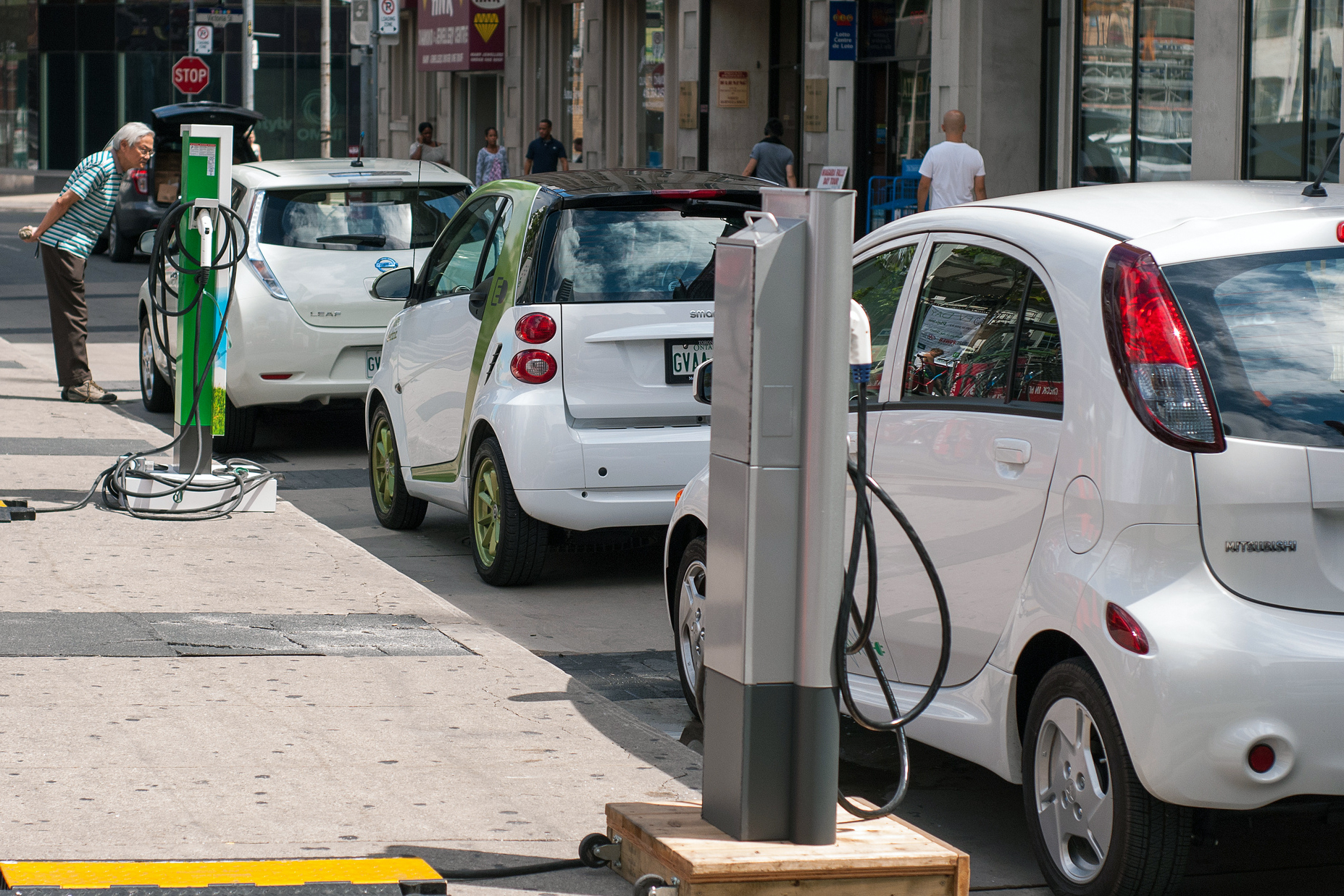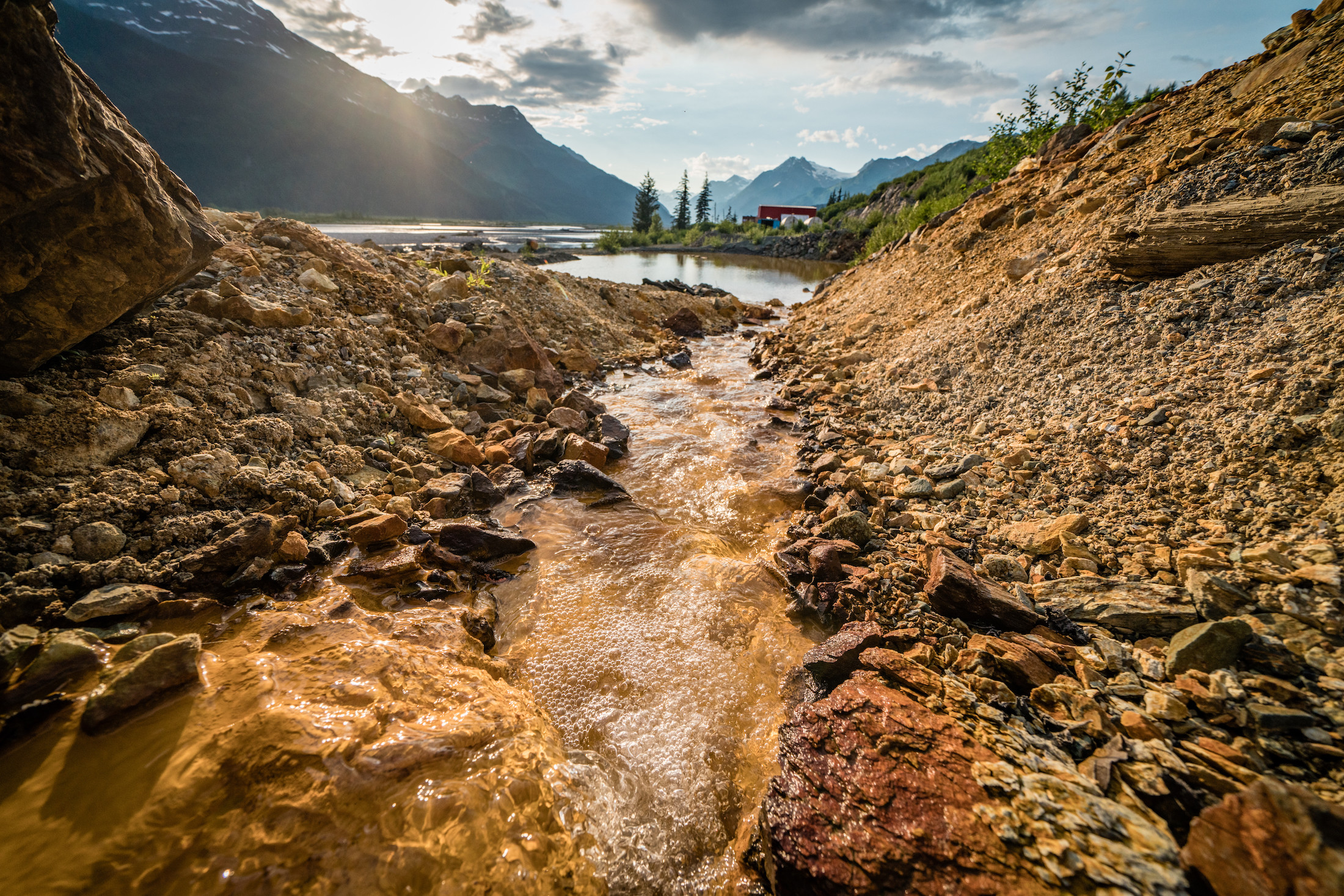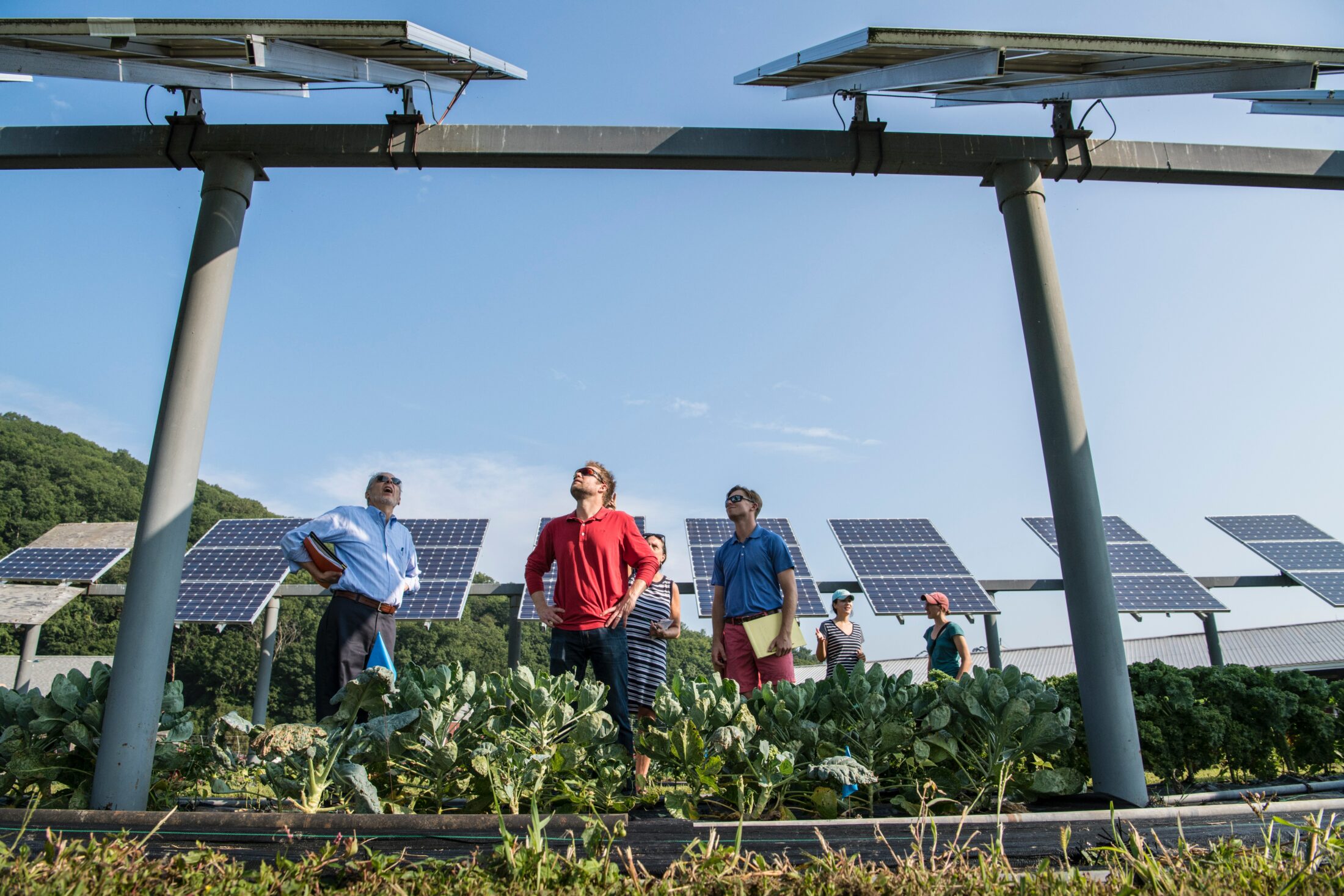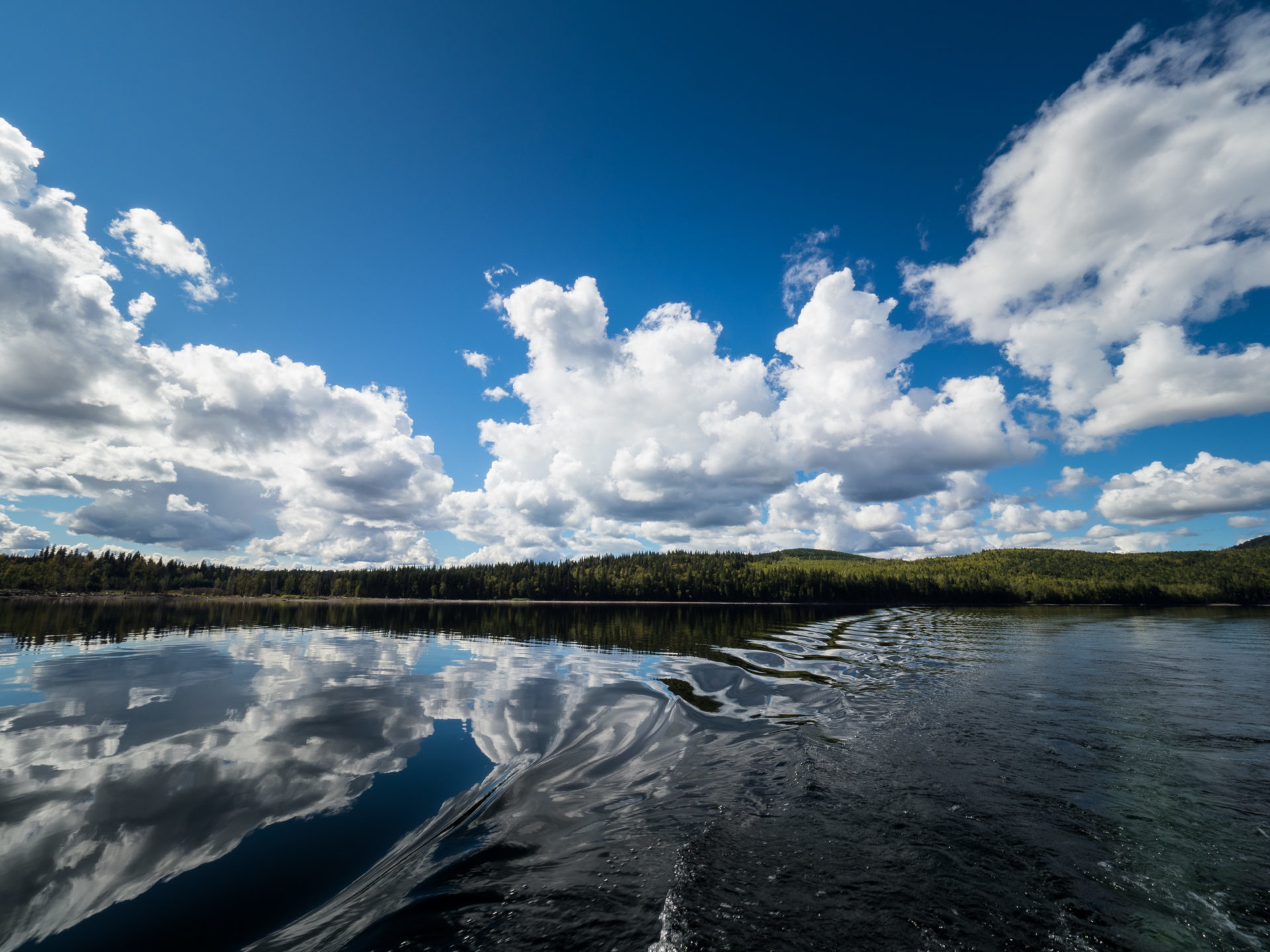
Hope for a huge, ancient and imperilled fish
First Nations are leading efforts to make sure lake sturgeon can find a home in...
It wasn’t long ago that the idea of a zero-emissions electric vehicle silently cruising the streets sounded like something out of The Jetsons
. According to the International Energy Agency, there are now more than seven million electric cars on the roads and there could be as many as 245 million by 2030.
But each of those cars relies on a battery to get from point A to point B. And those batteries are made with minerals like lithium, graphite, cobalt and nickel — all of which are mined.
Mined materials are also necessary to make wind turbines and solar panels. This demand is creating something of an environmental conundrum.
Research shows that mining waste has increased more than 300 per cent in some regions in the past decade and mining is responsible for up to 20 per cent of greenhouse gas emissions. With the push for more renewables, those numbers are set to increase. According to the World Bank and independent studies, by 2050 the energy transition is expected to increase the demand for certain minerals 30- to 800-fold.
Yet experts warn that the inevitable increase in mining activity is unsustainable under existing laws and regulations that aren’t adequate to ensure the transition to renewable energy is safe and just.
“We’re trading fossil fuel extraction for mineral extraction,” Jamie Kneen from MiningWatch Canada told The Narwhal in an interview. “We have to change the rules. Action has to be much more comprehensive and committed.”
Last November, nearly 200 experts, academics, researchers and activists from around the world met in Ottawa to discuss what it would take for mining to have a positive role in the transition to a low-carbon future.
Here are their key recommendations, as compiled in a new report by MiningWatch Canada.
The simplest way to reduce the demand for mined materials is to reduce the demand for energy.
A reduced demand for energy is necessary to reduce the impact of mining on communities. But it’s also necessary because the earth’s mineral resources are actually finite.
According to a 2019 report by Earthworks and the Institute for Sustainable Futures, the projected mineral demand for renewable energy would consume all of the cobalt, lithium and nickel on the planet.
That Earthworks report also found improving manufacturing efficiency and implementing recycling policies could reduce demand for certain primary minerals by up to 40 per cent.

Electric vehicles are expected to be the main drivers of the increased demand for mined metals. Photo: Wikimedia Commons
According to the MiningWatch report, battery storage for electric vehicles is projected to be the main driver of the increased demand for mined metals in the energy transition. As a result, the report said systemic changes are needed in urban design and transportation systems to “massively reduce the number of cars, not just build zero-emissions vehicles instead.”
The MiningWatch report also found the greatest opportunity to reduce the need for battery metals is to simply recycle used batteries.
Companies like Tesla are already operating in-house recycling facilities. But Kneen said industry-led initiatives are not enough and governments should be encouraging and supporting recycling initiatives.
While B.C. has created legislation to ensure 100 per cent of new vehicles sold in the province are electric by 2040, it doesn’t include rules or guidelines around recycling.
The MiningWatch report stresses the importance of prioritizing environmental protection and preventing contamination and toxic mine waste disasters.
“If lithium is the new ‘white gold,’ water is our ‘blue gold.’ It must be protected above all else,” Rodrigue Turgeon, a spokesperson for the Citizen Committee Protecting the Esker, a grassroots organization in northern Quebec, said in the report.
Landscapes in northern B.C. are littered with warnings of what can happen if mine waste is inadequately managed.
In 2014, the Mount Polley mine spilled 24 million cubic metres of toxic waste into creeks, rivers and lakes when its tailings dam broke. And for more than 60 years, the abandoned Tulsequah Chief mine has been leaking contaminated waste water into a salmon watershed. These disasters illustrate the need for “no-go zones” — places where mining is prohibited.

Water contaminated with acid mine drainage flows into a containment pond near the Tulsequah River. Photo: Colin Arisman / The Narwhal
The MiningWatch report suggests establishing participatory, community-based processes to identify no-go zones, supported by local, national and international legal frameworks.
One of the no-go zones highlighted in the report is the ocean floor, where the extraction of minerals could cause irreparable damage to ecosystems.
Kneen said the challenge of protecting ecosystems where mining should not take place boils down to who has the final say.
“People are going to have to choose and it’s really a question of who gets to choose,” he said. “Is it the First Nation or the community? Or is it the government on behalf of society at large? Or is it just a corporate feasibility study?”
The right to say “no” to mining projects, however, is missing from most jurisdictions, including B.C.
The report notes that, to be sustainable, mineral extraction must “require the free, prior and informed consent of Indigenous Peoples and the consent of local communities prior to any mining exploration or developments.”
But in B.C., the out-of-date Mineral Tenure Act allows anyone with a computer and a few dollars to stake a claim without asking permission. And even when First Nations are consulted through the environmental assessment process, a vital part of Indigenous Rights is still missing.

Experts warn we may run out of the mined metals required to make enough solar panels to meet the growing demand. Photo: Science in HD / Unsplash
“The problem we’re having is that consent doesn’t seem to include no,” Kneen said. “There’s a clear imbalance of power. When the mining company shows up, they’ve got their teams of technical people and lawyers and what have you. And then you’ve got the community people — they’re just outgunned.”
And when environmental disaster happens, Indigenous communities are often left with devastation to the natural ecosystems they rely on for food and culture.
“We’ve seen the disasters of Mount Polley’s massive mine waste spill and other failures worldwide grossly impacting Indigenous communities, the land and watersheds they protect,” Loretta Williams, one of the founding members of the First Nations Women Advocating Responsible Mining, said in the report.
The conference participants agreed that protecting basic human rights and respecting Indigenous sovereignty is vital as mining activity steadily increases. “Breaking from the pattern of colonial and capitalist exploitation has to be part of a just transition,” the report said.
Legal reforms are also going to be necessary to ensure mining activity for renewable energy doesn’t cause more environmental harm than good.
In B.C., activists and responsible mining advocates have been calling for reforms to provincial laws for decades. One of the key reforms needed, critics say, is a law that ensures the polluter pays. Mining companies are required to pay deposits to the province before extracting any minerals to cover the costs of cleanup and closure in case the company goes bankrupt. But as The Narwhal recently reported, those deposits often aren’t enough to cover cleanup costs. B.C. is short more than $1 billion for cleanup and that deficit could ultimately be shouldered by taxpayers.
A recent poll by the BC Mining Law Reform network and Northern Confluence showed that 90 per cent of British Columbians surveyed want mining companies to be responsible for the environmental damages they cause.
Following the Mount Polley dam failure, an independent panel reviewed the incident and presented recommendations to the government to prevent similar disasters from happening. According to a recent report by the B.C. First Nations Energy and Mining Council, those recommendations still haven’t been adequately addressed by the province.
And the Tulsequah Chief has shown just how challenging cleaning up and closing a mine can be. The province, despite making a commitment to clean up the long-standing environmental damage, has been hamstrung by legal restrictions caused by the bankruptcy of the mine’s owner.

Quesnel Lake was once considered one of the cleanest bodies of water in B.C. Since the Mount Polley spill, many residents fear drinking the water. Photo: Louis Bockner / The Narwhal
The MiningWatch report notes laws and government policies need to reflect the importance of minimizing social and environmental damage. “Legal protections need to be strengthened, developed and implemented to prevent harm, establish real accountability — including through supply chains — and respect Indigenous territories and governance.”
Kneen said the Initiative for Responsible Mining Assurance is a significant step in the right direction. Similar to the Forest Stewardship Council, the independent organization audits mines and rates them based on social, environmental and operational benchmarks. A mine automatically fails if it doesn’t meet certain requirements, such as not using child labour. The idea is if a mine has the certification, buyers can trust that the minerals were sourced responsibly.
Manufacturers and retailers can also become members, which commits them to sourcing from certified mines. In January, BMW committed to sourcing its raw materials to produce its fleet of electric vehicles from certified mines.
The program’s first audits have just wrapped up and while it remains to be seen how successful the program is, advocates are hopeful.
“They’re recognizing that there’s no mine in the world that’s ever going to get 100 per cent … but you work your way towards that,” Kneen said.
Get the inside scoop on The Narwhal’s environment and climate reporting by signing up for our free newsletter. Angello Johnson’s shoulders burn, and his arms...
Continue reading
First Nations are leading efforts to make sure lake sturgeon can find a home in...

We’re excited to share that an investigation by The Narwhal is a finalist for the...

A new documentary, Nechako: It Will Be a Big River Again, dives into how two...
